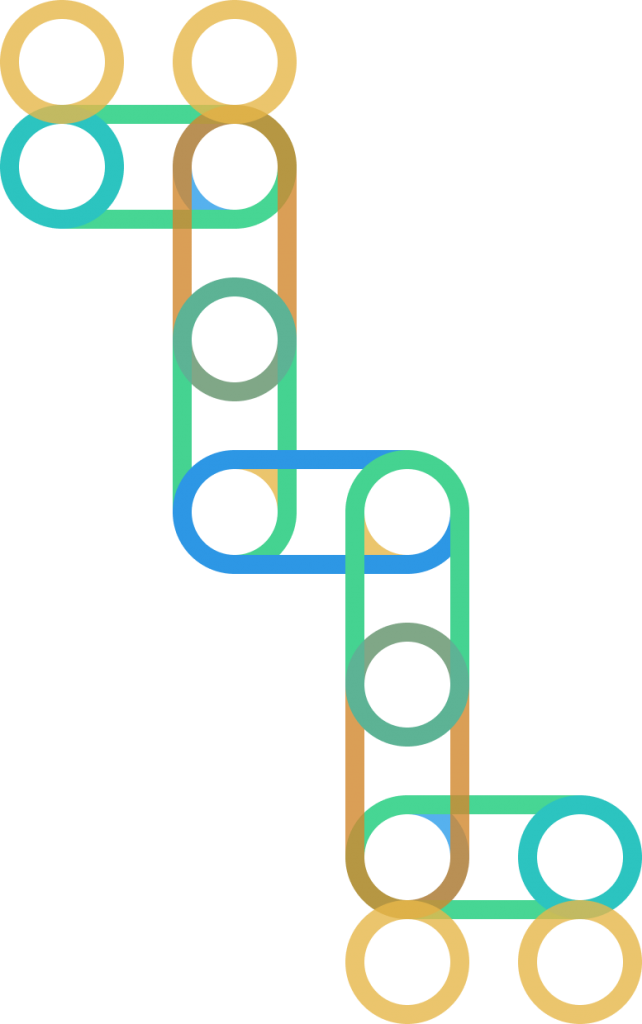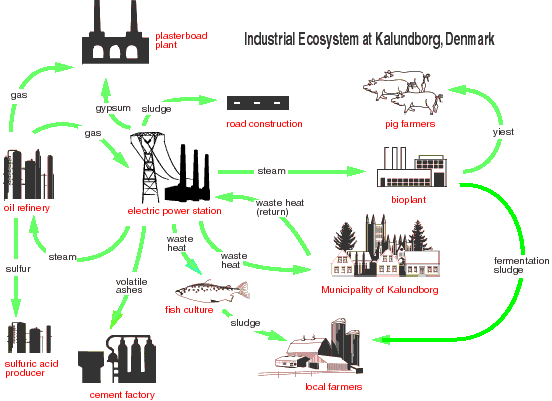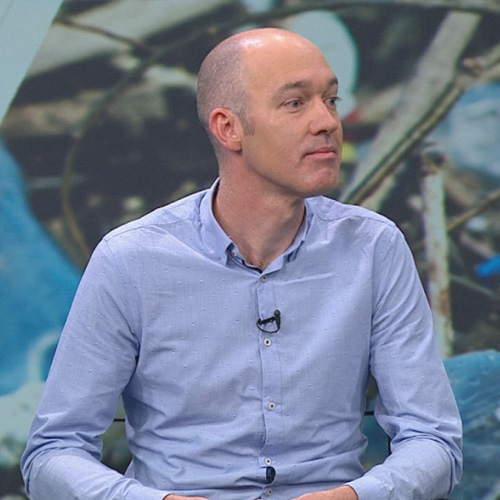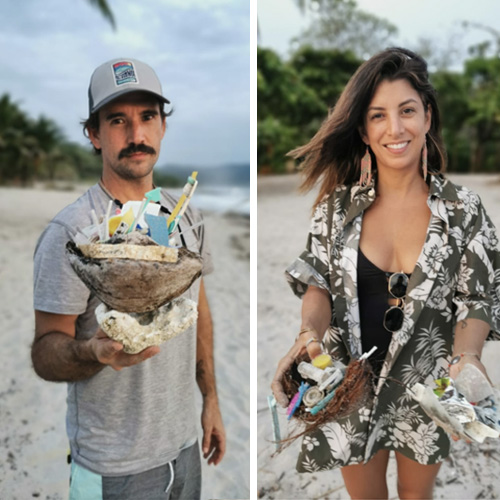
Regenerative thinking requires us to look at nesting systems within others to ensure that we restore overall balance. To be truly healthy, each system needs to aim to be reciprocal to the others.

Search for the words “Nested Systems Plastic” in Google, and the world’s favorite search engine throws up a series of plastic containers nested neatly inside each other.
We all have them in our house, those multi-colored containers that we use to keep our food fresh from one day to the next. Most definitely nested, but not quite what the regenerative movement refers to when it comes to nested systems.
Nested Plastic
It takes another couple of search attempts to find other examples of how the material — or the people involved in shaping its role in our society and biosphere — can better explore the material’s place in a truly “Nested System”.
For those that aren’t familiar with systems thinking and the move towards regenerative systems that aim to bring an end to the degenerative impact we are having on our environment, “nestedness” is a concept that shows up when we dive into what some call the ”old-world view” and others call “flatland”.
Flatland vs Three-Dimensional Thinking
As Carol Sanford, a regenerative practitioner for more than four decades argues, many still see the world as one of the two-dimensional places outlined in the 19th century masterpiece of science (and mathematical) fiction, Flatland: A Romance of Many Dimensions, by English clergyman, educator and Shakespearean scholar Edwin A. Abbott.

“When we see the world as a two-dimensional plane, we base our relationships with others on competition and convincing,” she writes drawing on her experience guiding eco-friendly cleaning, paper, and personal care products Seventh Generation towards a more regenerative corporate vision.
“When Seventh Generation began to see itself and its suppliers nested within an industry that was nested within local ecosystems on a living planet, it was able to shift its entire strategy,” Sanford writes in an enlightening series of blogs on Sustainable Brands.
“On the day of the aha moment, founder and then-CEO Jeffrey Hollender commented that because he hadn’t been thinking in terms of interdependence or of anything other than defending Earth, good as that had been, the company strategy had been competitive, rather than strategic and nested.”
The AdaPETation Network is an attempt to make a similar shift from competition towards collaboration in the sphere of the polymers industry.
Finding a company or industry’s role in more complex, nested systems requires the ability to take a step back and understand how everything fits into a bigger picture. Doing so will enable us to shift from the old reductionist paradigm to a new regenerative path.
“The great need now is not for improvements in parts, but instead for shifts in whole systems,” writes Sanford. “The old way works by cutting parts from wholes and attempting to improve them in isolation. But living systems, the basis of the new paradigm, always work as fully integrated wholes, and those who work with them create cascades of beneficial change through strategic interventions. This is the way businesspeople need to work, by creating enlightened disruption of whole systems for the purpose of regenerating them.”
For a business, industry or city to be truly regenerative it needs to understand its “interdependence” with other actors within its own systems at a local and ultimately global level.
Understanding A Sense of Place
In the regenerative movement there’s a focus on bioregions as the starting point for being able to implement changes at a local level, then as Daniel Wahl, the author of Designing Regenerative Cultures.
“The pathways into a regenerative future are as diverse as the regenerative cultures that will be an expression of that future,” writes Wahl. “Walking the path of regeneration is not about solutioneering to solve global problems and scaling them up in a copy and paste mindset without sensitivity to the bio-cultural uniqueness of place. Walking the regenerative path is about reconnecting with and manifesting the inherent potential of people in place to thrive individually and collectively as expressions of that place.”
Once we are all able to understand the singularity, or uniqueness of our gifts and talents, we can see more clearly what our role is and how to put ourselves at the service of something far greater than us.
“Walking the regenerative path is about understanding that in order to fully be able to share the unique gift each and everyone of us holds we need to put it in service to the larger context we are embedded in,” writes Wahl. “Walking a regenerative path is about building the individual and collective capacity of people and communities to humbly face an uncertain future by aligning with life’s inherent impulse to regenerate, evolve and transform individual by individual, community by community, bioregion by bioregion.”
As Sanford suggests, “Without the shift in paradigm and comprehension of the nested nature of living systems, they are no better off than squares and triangles in a two-dimensional world. Businesses rarely elevate themselves to realms of more dimensions, from which they can make regenerative contributions to their customers’ lives and their industries’ successes. We are all mostly unaware of the nests we live in, but developing the capability to perceive is the only truly effective way to influence the unfolding patterns that will create our future.”
How to Nest the PET Polymers Industry?
How does all this apply to the PET polymer industry? There are already efforts to translate regenerative thinking into industrial development. At a local level, there are plans to bring together solutions for industrial bioregions.
Effective examples illustrate how regeneration requires industry to move away from two-dimensional thinking towards multi-dimensional thinking. To do so any industry needs to move away from efficiency and engineering of greater productivity for the sake of it, towards the creation of an industry that serves others, putting itself at the service of life.
As Wahl writes in Designing Regenerative Culture, ancient indigenous cultures have shown how we can live in harmony with nature. These ancient cultures acted as custodians of the land they cohabited with other species.
”One thing most of these cultures had in common is that they understood themselves not as owners but expressions of place. Rather than the land belonging to them, they belonged to the land. All decisions of importance were made with three questions in heart/mind:Does it serve the individual? Does it serve the community? Does it serve life?”
Broadening the understanding of a company and an industry’s place in a bigger system, is crucial to envisage a world where industries like the petrochemical and polymers industry can move from degenerative to regenerative.
“Some businesses wake up and become customer- and market-centric when they learn to see that customers are the big Kahuna — the deciders when it comes to purchasing — and thereby have a greater impact on a business’s success than its internal work on efficiency ever can,” says Sanford.
“These businesses understand that, if they ignore their customers in order to focus on improving efficiency, the results will include a downgrade in the qualities of their products that matter most to customers. Understanding the interrelatedness of our effects requires us to think more deeply about the nestedness of systems. Buyers and markets make up a larger whole within which our businesses are nested. They are strongly affected by their local ecosystems and by Earth as a whole, simply by being nested within them. Our way to cause regenerative changes in nature is through thoughtful attention to the lives of customers and what can most improve them.”
Consumers are speaking with greater unity about what they want. In a recent poll by Wunderman Thomson it was found that “across the United States, the United Kingdom and China, 84% think economies should be rebuilt in a way that champions inclusivity and sustainability. Some 89% of respondents wanted companies/brands to do a lot more to reduce their carbon impact and 86% saying they expect businesses to play their part in solving big challenges like climate change or social justice. Furthermore, 88% of respondents said companies/brands have a responsibility to take care of the planet and its people and 94% of respondents place living more sustainably as an aspiration even if they don’t always hit the target.”
Putting the economy in its place is central to the thinking of Kate Raworth’s Donut Economics movement which spells out how an economic system needs to become nested within other systems including society and the biosphere which supports all of us. The SDG wedding cake (below) is perhaps the best visual tool to see this thinking.

Seeing the economy through this lens makes it clear that we need to consider how the decisions taken in a company or an industry must contribute to improvements at a broader scale.
Eco-Industrial Parks
One of the first efforts to introduce improvements to industrial production, to see how industrial plants can become “nested” is the construction of Eco-Industrial Parks (EIPs).
EIPs are collections of collocated industries that collaborate to reduce raw material use, emissions, and waste generation while maintaining economic gains through mutually beneficial connections. The concept of mutualistic interactions amongst industrial groups, referred to as industrial symbiosis, is inspired from networks in ecology, where some interactions within an ecosystem promote the wellbeing of all species involved.
Perhaps the best example of these mutualistic interactions to industry and their proven environmental benefits is the Kalundborg EIP in Denmark, which has managed to significantly reduce the use of surface and groundwater, simultaneously seeing reductions in CO2 emissions and Gypsum consumption, among other environmentally hazardous imports and exports. Furthermore, the company that sits at the heart of this symbiotic system, Novo Nordisk, has put itself at the service of humanity in its search for a cure for diabetes.

There are already some interesting examples of this kind of thinking being introduced to the PET polymers industry. Notably technologies being developed by LanzaTech with consumer goods company, Danone, that capture carbon dioxide outputs from one industrial process to be converted into monoethylene glycol, (MEG), a key building block for PET. Plastic created by preventing carbon dioxide from entering the atmosphere.
There are other examples where PET is putting itself at the service of other systems like the PETGas initiative in Cancun, Mexico that is converting plastic waste into energy that fuels coral restoration programs in the region. The AdaPETation Network recently published a host of other examples where PET and other polymers helping restore ecosystems are putting themselves at the service of the planet, or their bioregion.
These kinds of mutualistic initiatives illustrate how consumers are influencing brands to seek suppliers that understand the power of collaboration and the importance of making beneficial contributions to the systems within which they operate.
Beneficial contributions and evolution are the clearest, most effective way to think about nested systems.
As Sanford writes: “The best companies base their work on the ordering and pattern-generating nature of complex living systems nested within larger living systems. Our adoption of this and other aspects of the new paradigm will guide the next wave of effective entrepreneurialism, determine the role we play in mitigating climate, and decide whether or not we create a viable future for ourselves.”
If you know of any more similar initiatives, the AdaPETation Network is bringing solutions together to encourage greater collaboration and more.
If you’re working on something that puts PET at the service of life we’d love to hear from you. Please join the network and share with us your initiatives.
Share it
Share it
Useful Links
THE HISTORY OF PLASTIC
Throughout the history of plastic, PET has been crucial in keeping food fresh with lightweight and durable packaging solutions that have helped reduce food waste for almost a century. Learn all about the invention of plastic and the important role it has played feeding people and saving the lives of humans and elephants in the adaPETation® timeline of the history of plastic.





